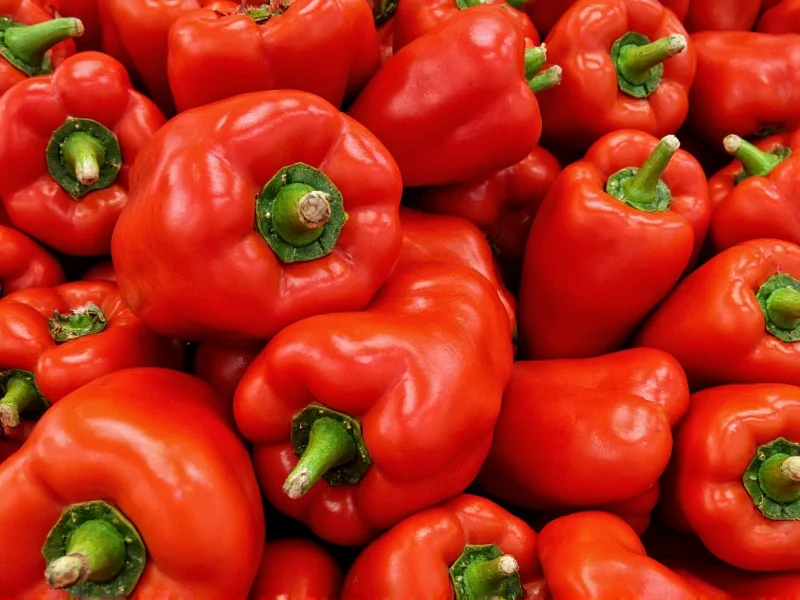Understanding paprika's spiciness requires examining its botanical origins and global variations. This vibrant red spice, made from ground Capsicum annuum peppers, spans the entire heat spectrum from bell pepper mildness to cayenne-level warmth. The key factor determining whether paprika is spicy lies in the specific pepper cultivars used and regional production methods.
The Science Behind Paprika Heat Levels
Paprika's spiciness depends on capsaicin concentration—the compound responsible for chili heat. When manufacturers select sweet pepper varieties with negligible capsaicin, the result is mild paprika ideal for color without burn. Conversely, processors using hotter cultivars create paprikas with measurable Scoville Heat Units (SHU). This fundamental distinction explains why supermarket paprika often surprises cooks expecting uniform heat.
| Paprika Type | Scoville Heat Units | Flavor Profile | Common Uses |
|---|---|---|---|
| Sweet Hungarian | 0–500 SHU | Fruity, earthy | Goulash, stews |
| Hot Hungarian | 5,000–10,000 SHU | Sharp, pungent | Spicy sauces, rubs |
| Spanish Smoked (Pimentón) | 0–1,000 SHU | Smoky, sweet | Paella, chorizo |
| Serbian Hot | 15,000–30,000 SHU | Intense heat | Specialty dishes |
Regional Variations Explained
Hungarian paprika represents the most diverse category, with six official classifications ranging from édes (hot) to edés nemes (noble sweet). Spain's famous Pimentón de la Vera undergoes traditional oak-smoking, creating distinct sweet (dulce), bittersweet (agridulce), and hot (picante) varieties. American paprika typically follows the milder Hungarian sweet style, causing confusion when recipes specify "hot paprika" without regional context.
Identifying Spicy Paprika When Shopping
Check packaging for these critical indicators:
- Regional designation - "Hungarian hot" or "Spanish picante" signals heat
- Color intensity - Darker red often indicates higher capsaicin (but not always)
- Processing notes - "Smoked" doesn't mean spicy (Spanish smoked is usually mild)
- Ingredient list - Pure paprika should contain only ground peppers
When in doubt, perform a taste test: place a pinch on your tongue. Sweet paprika delivers pure pepper flavor with no burn, while hot varieties produce immediate warmth building to noticeable heat within 15 seconds. This simple test prevents recipe disasters when paprika's heat level matters.
Culinary Applications by Heat Level
Chefs leverage paprika's heat spectrum strategically:
- Sweet paprika enhances color in deviled eggs, potato salads, and tomato sauces without altering flavor balance
- Medium-heat varieties add complexity to roasted meats and vegetable dishes
- Hot paprika serves as cayenne substitute in spice rubs and chili blends
- Smoked paprika provides depth to bean dishes and barbecue sauces regardless of heat level
The most common paprika mistake involves substituting hot for sweet varieties in traditional recipes. Hungarian goulash requires specific sweet paprika (édesnemes) for authentic flavor—using hot paprika creates an entirely different dish. Similarly, Spanish recipes relying on smoked paprika's flavor (not heat) become unbalanced when hot varieties replace traditional pimentón dulce.
Debunking Common Misconceptions
Three persistent myths about paprika heat need clarification:
- "All paprika is spicy" - False: Sweet varieties contain zero capsaicin
- "Smoked means hot" - Incorrect: Spanish smoked paprika is predominantly sweet
- "Paprika heat equals cayenne" - Misleading: Even hot paprika rarely exceeds 10,000 SHU (cayenne averages 30,000–50,000 SHU)
Understanding these distinctions transforms paprika from a confusing spice into a versatile culinary tool. By selecting the appropriate variety for each application, cooks access an extraordinary range of flavors—from the subtle sweetness enhancing deviled eggs to the assertive heat powering authentic Hungarian stews.
Frequently Asked Questions
Is paprika always spicy?
No, paprika ranges from completely sweet (0 SHU) to moderately hot (up to 30,000 SHU). Most commercial paprika sold in supermarkets is sweet variety with no noticeable heat. Hungarian and some specialty paprikas can be spicy, but Spanish smoked paprika is typically mild despite its intense flavor.
Why do some recipes specify hot paprika?
Traditional Hungarian and Balkan recipes often require hot paprika (édes) for authentic flavor. These dishes rely on paprika's specific heat profile rather than generic chili powder. Using sweet paprika in these recipes creates a fundamentally different dish lacking the intended pungency.
How can I tell if paprika is spicy before buying?
Check the label for regional indicators ("hot Hungarian" or "picante") and Scoville ratings when available. Sweet paprika often says "sweet" or "mild" explicitly. In stores, darker red color sometimes indicates higher heat, but this isn't reliable—Spanish smoked paprika is dark but usually mild. When uncertain, choose brands specifying heat level like "sweet," "medium," or "hot. "
Can I substitute cayenne for hot paprika?
Use caution—cayenne is significantly hotter (30,000–50,000 SHU) than even hot paprika (typically 5,000–10,000 SHU). Substitute at a 1:3 ratio (1 part cayenne to 3 parts paprika). Better alternatives include ancho chili powder for mild heat or a blend of sweet paprika with a pinch of cayenne for controlled spiciness.
Does smoked paprika have heat?
Smoking doesn't determine heat level. Spanish Pimentón de la Vera comes in three varieties: dulce (sweet/mild), agridulce (bittersweet), and picante (hot). Most smoked paprika sold globally is the sweet variety, so don't assume smoked equals spicy. Always check the label for heat designation.











 浙公网安备
33010002000092号
浙公网安备
33010002000092号 浙B2-20120091-4
浙B2-20120091-4